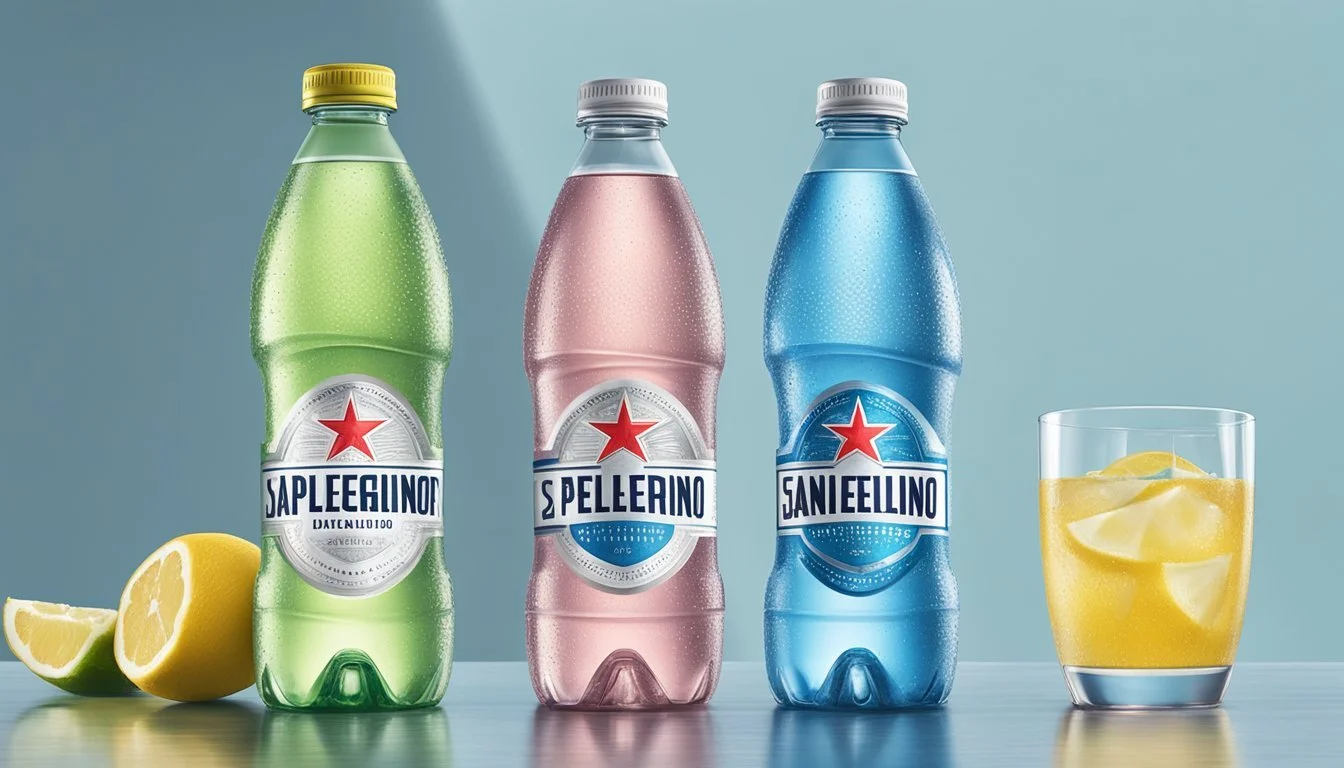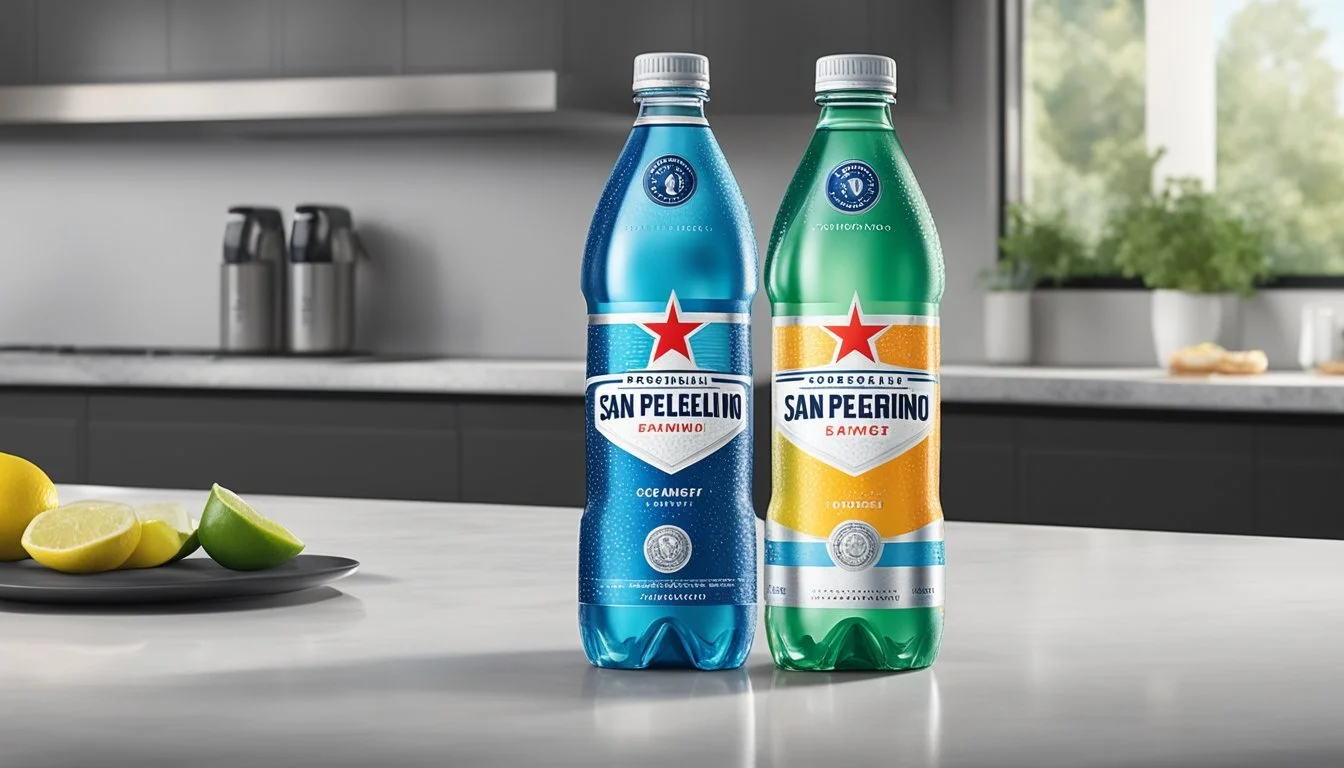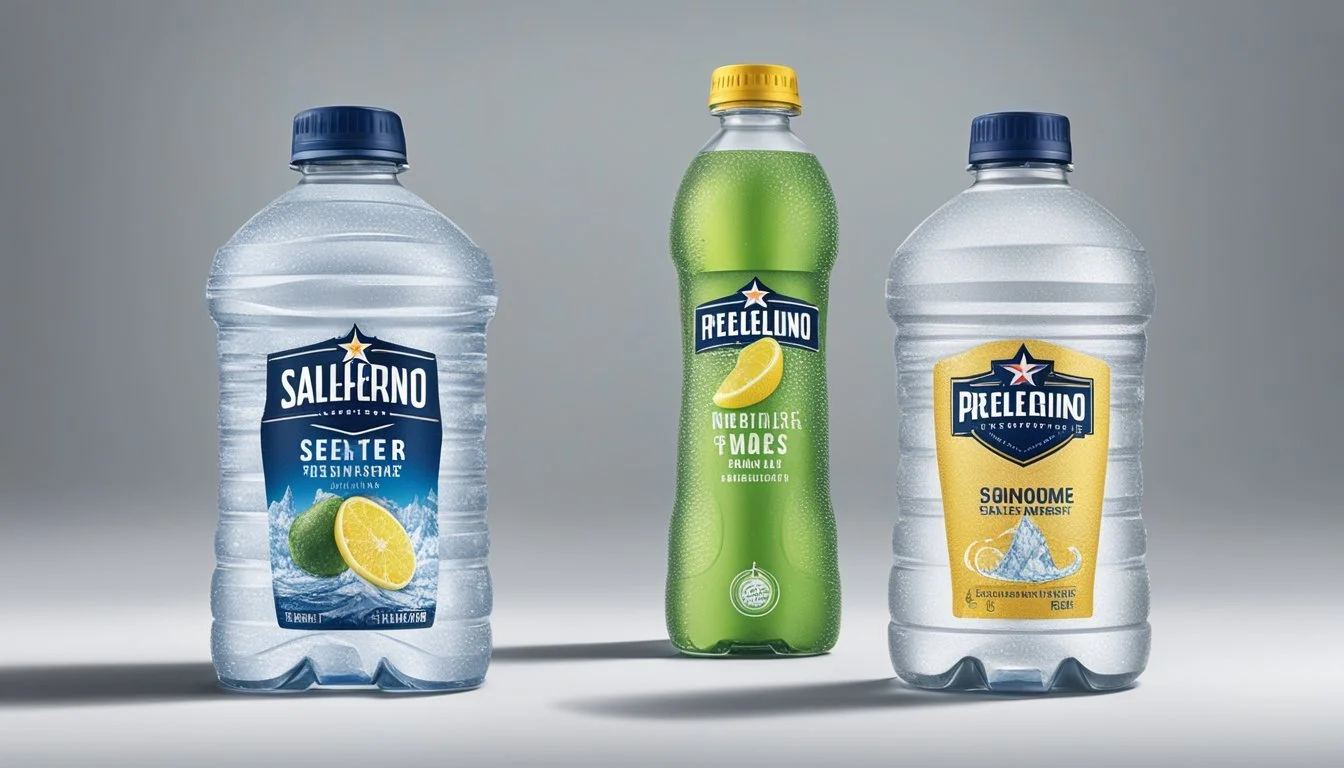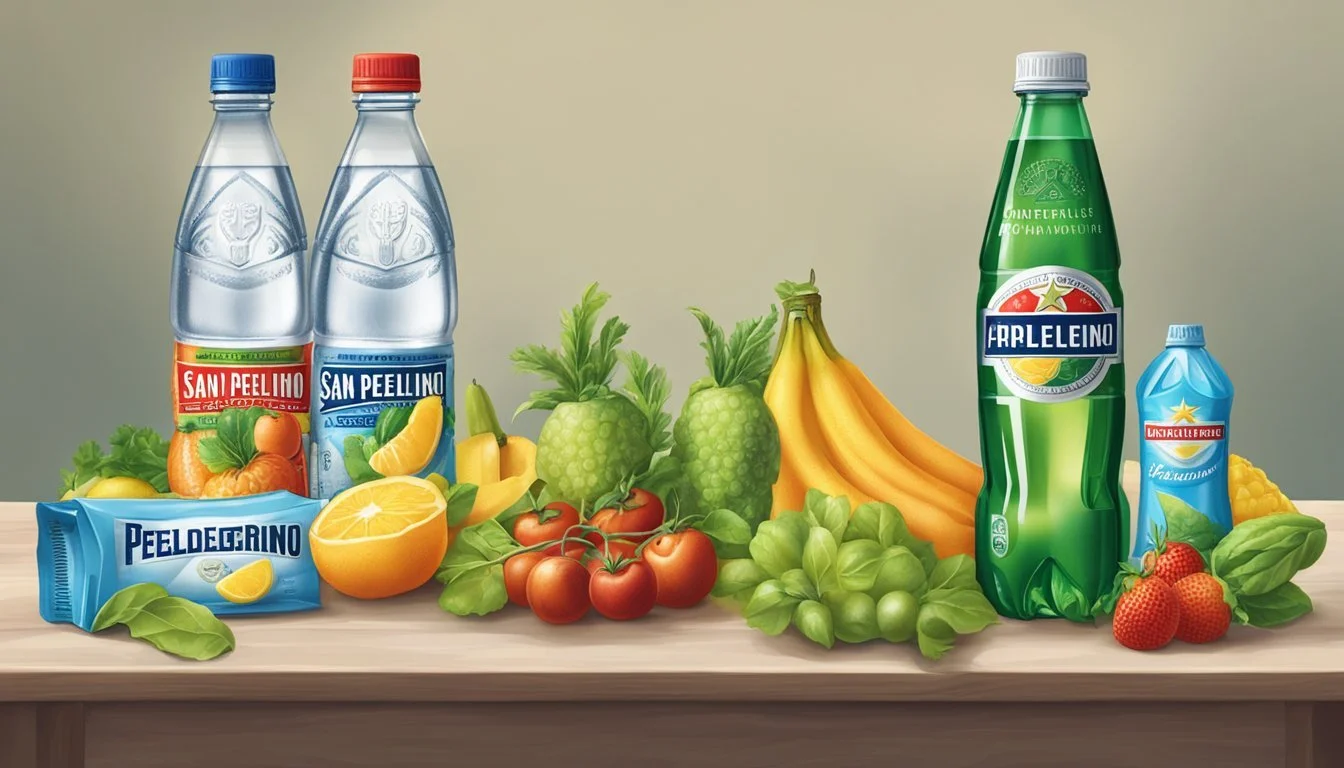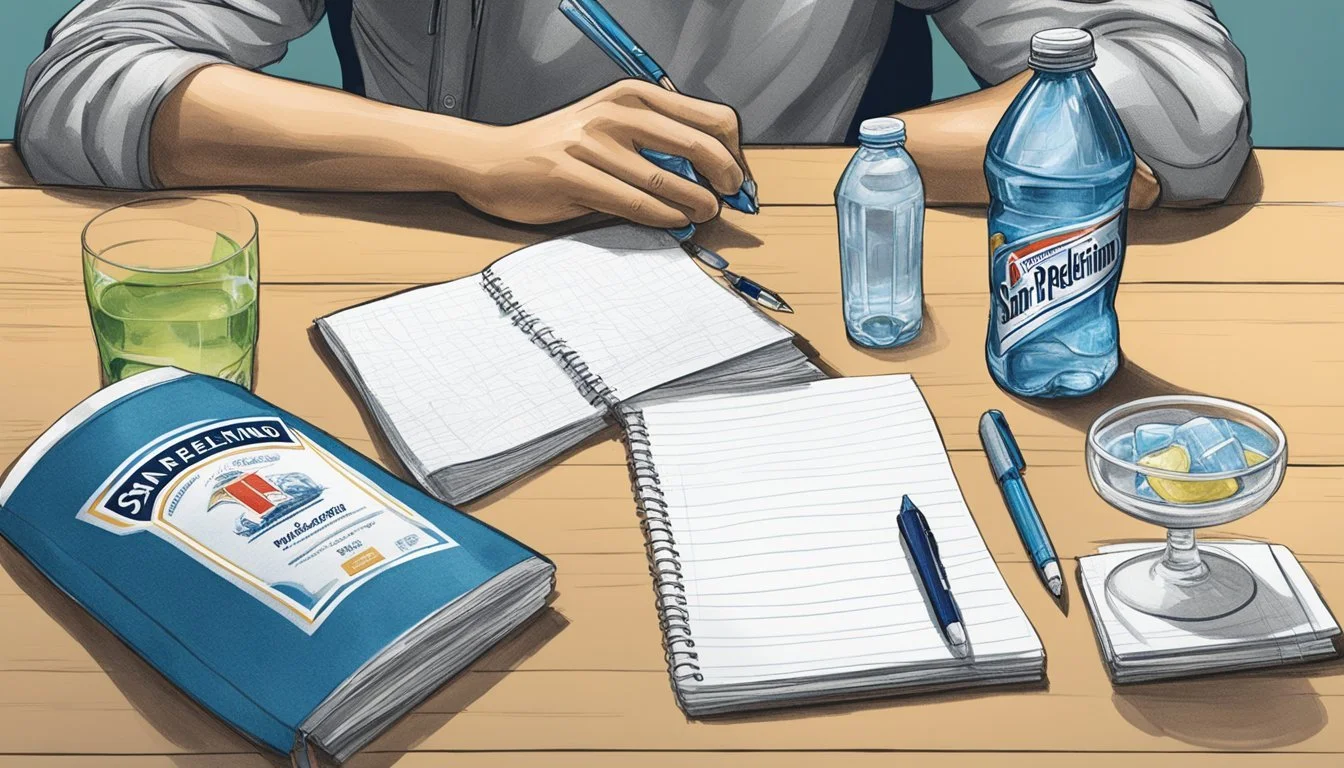San Pellegrino vs. BodyArmor
Bottled Water Comparison Guide
When it comes to premium bottled water choices, San Pellegrino and BodyArmor are two brands that often come up in conversation. San Pellegrino, known for its mineral-rich sparkling water sourced from the Italian Alps, offers a distinctive taste with fine bubbles and a balanced mineral content. This makes it a popular choice for those who enjoy a sophisticated, effervescent experience.
BodyArmor, on the other hand, focuses on providing enhanced hydration with its alkaline water, which is purified through a proprietary process and infused with electrolytes. This option is particularly appealing for athletes and active individuals looking for hydration support beyond just plain water.
For those who prioritize a refined taste and enjoy the texture of sparkling water, San Pellegrino stands out as a superior choice. Conversely, if enhanced hydration and electrolyte replenishment are more important, BodyArmor offers a compelling alternative.
Profile of Bottled Water Brands
San Pellegrino and BodyArmor are two distinct brands offering bottled water with unique characteristics and brand philosophies. While both aim to provide premium hydration solutions, their histories, origins, and approaches to lifestyle vary significantly.
History and Origin
San Pellegrino originates from San Pellegrino Terme in the Italian Alps. Known for its natural mineral water, the region's aquifers filter the water through porous rocks, enriching it with minerals like calcium and magnesium. San Pellegrino has been bottling this sparkling water since 1899, with a focus on maintaining purity and quality.
BodyArmor is a relatively newer entrant in the market, founded in 2011. This brand is American and well known for its sports drinks that include electrolytes, vitamins, and natural flavors. BodyArmor expanded into water with a hydration emphasis, distinguishing itself with high-performance and nutrient-infused beverages.
Brand Philosophy and Lifestyle
San Pellegrino promotes a sophisticated, luxurious lifestyle, often associated with fine dining establishments and gourmet experiences. Their sparkling water is seen as a symbol of elegance and quality, aligning with its Italian heritage. Key flavors in their portfolio include lemon and orange, adding a tasteful variety to the mineral-rich water.
On the other hand, BodyArmor targets a more active lifestyle, catering to athletes and fitness enthusiasts. Their water products emphasize hydration and performance, often being sugar-free and infused with electrolytes. This focus is reflected in their branding and marketing, which aligns more with a high-energy, health-conscious consumer base.
In sum, San Pellegrino and BodyArmor offer distinctly different experiences and philosophies, catering to varied consumer preferences.
Water Quality and Content
This section compares the mineral content, pH levels, and alkalinity of San Pellegrino and BodyArmor bottled waters, offering detailed insights into their quality and potential health benefits.
Mineral Content Analysis
San Pellegrino, a sparkling mineral water from natural springs in Italy, boasts a rich mineral profile. It contains 160 mg/L of calcium, 53 mg/L of magnesium, and 47 mg/L of chloride. These minerals can contribute to overall health by supporting bone health and metabolic functions.
BodyArmor water, known for its electrolytes, contains added minerals like potassium and sodium. This brand targets athletes, focusing on hydration and recovery. The sodium content helps replace electrolytes lost through sweat, while potassium supports muscle function.
Mineral San Pellegrino BodyArmor Calcium 160 mg/L - Magnesium 53 mg/L - Chloride 47 mg/L - Sodium Moderate High Potassium - High
These differences emphasize San Pellegrino as a choice for those seeking natural mineral benefits, while BodyArmor is suitable for sports enthusiasts needing electrolyte replenishment.
pH Levels and Alkalinity
San Pellegrino's pH level is around 5.6 due to its carbonation, making it slightly more acidic. Despite claims of an alkaline pH of 7.7 at the source, it reaches consumers at a lower pH. Sparkling mineral waters like San Pellegrino can sometimes cause mild acidity, which may not suit those with sensitive stomachs.
BodyArmor, on the other hand, has a more neutral to slightly alkaline pH, typically ranging between 7.4 to 7.8. This alkalinity can be beneficial for balancing body pH levels, especially after intense physical activity.
In summary, San Pellegrino provides a richer mineral content but with a lower pH, catering to those preferring natural mineral water. BodyArmor offers a higher pH, focusing on hydration and electrolyte balance ideal for athletes.
Types of Waters Offered
San Pellegrino and BodyArmor offer diverse water types, catering to different preferences. Key differences lie in their variations between still and sparkling options along with unique flavor varieties aimed at enhancing the drinking experience.
Still vs. Sparkling Waters
San Pellegrino is renowned for its sparkling water, characterized by natural bubbles and a distinct taste due to the presence of minerals such as magnesium and sulfates. The effervescence provides a refreshing sensation, often enjoyed as a palate cleanser during meals.
BodyArmor, primarily known for its sports drinks, also offers still water. Their still water is marketed as ultra-hydrating and electrolyte-enhanced, catering to active lifestyles. Unlike San Pellegrino, BodyArmor focuses more on hydration and recovery, emphasizing the practicality of their still water for athletes and fitness enthusiasts.
The choice between still and sparkling largely depends on personal preference and situational use. Sparkling waters like San Pellegrino tend to be favored in fine dining and social settings, while BodyArmor’s still water is pitched towards those seeking functionality and hydration in their daily routines.
Unique Flavor Varieties
San Pellegrino stands out with its variety of flavored sparkling waters. They offer a range of artisanal flavors such as lemon, orange, clementine, prickly pear, and chinotto. These flavors provide a sophisticated twist, turning a regular hydration moment into a tasteful experience. Options like Aranciata Rossa (blood orange) and Limone e Menta (lemon and mint) highlight their commitment to unique taste profiles.
BodyArmor, albeit less focused on exotic flavorings in their bottled water, excels in flavored sports drinks. Their range includes flavors designed to replenish and energize, such as peach mango, tropical punch, and grapefruit. While these are not sparkling, they offer an electrolyte boost alongside their refreshing taste, fitting into the brand’s athletic theme.
Thus, San Pellegrino appeals to consumers with refined tastes seeking a sparkling kick, whereas BodyArmor caters to those prioritizing hydration and recovery with their still and functional variations.
Packaging and Presentation
When comparing San Pellegrino and BodyArmor, it is important to look at their packaging and presentation, as these factors greatly contribute to consumer preferences and environmental impact.
Bottle Design and Materials
San Pellegrino's iconic glass bottles are immediately recognizable. The design is both elegant and functional, with embossed details and a sturdy build that appeals to premium sparkling water enthusiasts. The glass bottles not only preserve the carbonation well but also convey a sense of luxury.
BodyArmor, on the other hand, typically uses plastic for their water bottles. The design focuses on practicality and ease of use, making it more suitable for active lifestyles and sports settings. The plastic bottles are lightweight and often feature ergonomic designs that are easy to grip.
Environmental Impact and Sustainability
San Pellegrino’s use of glass bottles is generally more favorable for the environment compared to plastic. Glass can be recycled indefinitely without losing quality, reducing overall waste. Additionally, the production of glass bottles, though energy-intensive, has a more sustainable lifecycle.
BodyArmor’s plastic bottles have a higher environmental footprint due to their limited recyclability and the pollution associated with plastic production and disposal. Efforts to mitigate this impact include using recycled plastics (rPET) and developing more eco-friendly packaging solutions. Nonetheless, the shift towards reducing plastic usage is crucial for minimizing environmental harm.
Each brand's packaging strategy reflects its market focus and environmental priorities, providing key insights into their overall product presentation.
Culinary Applications
When it comes to culinary applications, both San Pellegrino and BodyArmor offer unique characteristics that cater to different needs in gourmet settings and food pairings. The following subsections will provide an in-depth look at their use in pairing with food and wine, as well as their roles in fine dining and gourmet settings.
Pairing with Food and Wine
San Pellegrino, a renowned sparkling water, is often chosen for its crisp, slightly bitter taste, which complements rich and fatty dishes. Its high mineral content, including 160 mg/L calcium and 53 mg/L magnesium, makes it an excellent palate cleanser, preparing the taste buds for new flavors.
BodyArmor, on the other hand, is typically a still water known for its balanced pH level and added electrolytes. Despite being less common in high-end culinary pairings, BodyArmor can be a good choice with spicier dishes or after consuming heavy sauces, thanks to its refreshing, clean finish.
Wine pairings often favor San Pellegrino due to its sparkle, which can enhance the aromatic profile of white wines and sparkling wines, providing a more nuanced tasting experience.
Role in Fine Dining and Gourmet Settings
In fine dining and gourmet restaurants, water selection plays a pivotal role. San Pellegrino is a staple, frequently recommended by water sommeliers for its versatility and elegant presentation. Its distinct sparkle and mineral-rich profile align well with sophisticated dishes, making it a preferred choice in upscale eateries.
BodyArmor, while less prominent in high-end dining, is appreciated for its hydration-focused properties. Its clean taste and added electrolytes can offer a practical complement in health-oriented gourmet restaurants.
Both waters serve unique roles: San Pellegrino's sparkling nature elevates the dining experience, while BodyArmor's still, electrolyte-rich composition provides a refreshing choice in more casual or health-centric settings.
Consumer Experience and Feedback
When comparing San Pellegrino and BodyArmor bottled waters, consumer feedback highlights notable distinctions in taste profiles and potential health benefits due to their unique compositions.
Taste Profiles and Personal Preferences
San Pellegrino is renowned for its sparkling quality and slightly higher carbonation, which many consumers find refreshing. The mineral content, with 160 mg/L of calcium and 53 mg/L of magnesium, adds a subtle yet distinct taste that appeals to those who prefer a mineral-rich flavor.
Consumers often mention that San Pellegrino's fizz and balanced mineral profile make it an ideal choice for a tasteful, effervescent experience.
In contrast, BodyArmor sports a smoother, still water experience, enhanced with electrolytes for better hydration. Its clean taste and added minerals aim to appeal to those seeking both refreshment and rehydration after physical activity. Consumers who prioritize a non-carbonated drink with a neutral taste and added health benefits often lean towards BodyArmor.
Digestion and Health Considerations
San Pellegrino's mineral-rich composition is often praised for its potential benefits to digestion. The calcium and magnesium levels in the water can aid in maintaining healthy digestive functions. Many people appreciate the light, fizzy sensation which some find assists with digestion, especially after meals.
BodyArmor focuses on hydration and electrolyte replenishment. It contains added electrolytes like sodium and potassium that can be beneficial during or after intense physical activities. Consumers looking for effective rehydration solutions post-workout often select BodyArmor for its capability to restore lost fluids and electrolytes efficiently.
Both brands offer distinct benefits that cater to different consumer needs, with San Pellegrino being favored for its mineral-rich taste and BodyArmor for its hydration properties.
Price Comparison and Value
When comparing San Pellegrino and BodyArmor, price and value are key factors.
San Pellegrino is often priced at about $1.50 per 16.9-ounce bottle. This sparkling water is known for its slightly higher fizz and is favored for its premium quality. Bulk purchases, such as a 12-pack, usually bring the price down slightly.
In contrast, BodyArmor’s water offerings—particularly their alkaline water—are typically around $1.29 per 16.9-ounce bottle. BodyArmor has captured attention for its high pH balance and added electrolytes, aimed at active individuals.
Here's a quick comparison:
Brand Bottle Size Price Per Bottle Special Features San Pellegrino 16.9 oz $1.50 High fizz, premium branding BodyArmor 16.9 oz $1.29 High pH, added electrolytes
Value can be subjective and varies by what consumers prioritize. Those seeking a premium sparkling water might find San Pellegrino a better fit despite its slightly higher cost. On the other hand, fitness enthusiasts might lean towards BodyArmor for its added health benefits at a lower price point.
In the end, both brands offer distinct advantages that cater to different preferences and needs.
Conclusion
San Pellegrino and BodyArmor offer distinct experiences in the bottled water market.
San Pellegrino stands out for its signature carbonation and mineral content. The bubbles enhance the drinking experience, making it a favorite for those who enjoy sparkling water. Mineral-rich, it provides essential nutrients like calcium and magnesium, contributing to daily hydration needs.
*BodyArmor, on the other hand, focuses on optimal hydration. It incorporates electrolytes and vitamins, aiming to replenish and rejuvenate. This makes it especially appealing to athletes and active individuals seeking a performance boost.
Both brands cater to different hydration preferences. San Pellegrino appeals to those who enjoy the crisp taste and natural minerals of sparkling water, while BodyArmor targets consumers looking for enhanced hydration with added nutrients.
Choosing between the two depends on personal needs. If one desires a refreshing, mineral-infused beverage, San Pellegrino is the choice. For a nutrient-rich, hydrating option, BodyArmor is preferable.
More About San Pellegrino
Acqua Panna vs San Pellegrino: Which Bottled Water is Better?
Boxed Water vs San Pellegrino: Which Bottled Water is Better?
Core Hydration vs San Pellegrino: Which Bottled Water is Better?
Ice Mountain vs San Pellegrino: Which Bottled Water is Better?
Icelandic Glacial vs San Pellegrino: Which Bottled Water is Better?
Just Water vs San Pellegrino: Which Bottled Water is Better?
Mountain Valley Spring Water vs San Pellegrino: Which Bottled Water is Better?
Nestle Pure Life vs San Pellegrino: Which Bottled Water is Better?
Poland Spring vs San Pellegrino: Which Bottled Water is Better?
San Pellegrino vs Alkaline88: Which Bottled Water is Better?
San Pellegrino vs Aqua Carpatica: Which Bottled Water is Better?
San Pellegrino vs Cascade Mountain: Which Bottled Water is Better?
San Pellegrino vs Castle Rock: Which Bottled Water is Better?
San Pellegrino vs CBD Living: Which Bottled Water is Better?
San Pellegrino vs Crystal Geyser: Which Bottled Water is Better?
San Pellegrino vs Crystal Lake: Which Bottled Water is Better?
San Pellegrino vs Essence pH10: Which Bottled Water is Better?
San Pellegrino vs Hawaii Volcanic: Which Bottled Water is Better?
San Pellegrino vs Hawaiian Springs: Which Bottled Water is Better?
San Pellegrino vs Kirkland Signature: Which Bottled Water is Better?
San Pellegrino vs Liquid Death: Which Bottled Water is Better?
San Pellegrino vs Open Water: Which Bottled Water is Better?
San Pellegrino vs Proud Source: Which Bottled Water is Better?
San Pellegrino vs Purely Sedona: Which Bottled Water is Better?
San Pellegrino vs Richard's Rainwater: Which Bottled Water is Better?
San Pellegrino vs Simple Truth: Which Bottled Water is Better?
San Pellegrino vs Smartwater: Which Bottled Water is Better?
San Pellegrino vs Solan de Cabras: Which Bottled Water is Better?
San Pellegrino vs Talking Rain AQA: Which Bottled Water is Better?
San Pellegrino vs Topo Chico: Which Bottled Water is Better?
San Pellegrino vs Weird Water: Which Bottled Water is Better?
San Pellegrino vs Whole Foods 365: Which Bottled Water is Better?
San Pellegrino vs Whole Foods Italian Still Mineral water: Which Bottled Water is Better?
San Pellegrino vs Zephyrhills: Which Bottled Water is Better?
More About BodyArmor
BodyArmor vs Kirkland Signature: Which Bottled Water is Better?
Cascade Mountain vs BodyArmor: Which Bottled Water is Better?
Hawaii Volcanic vs BodyArmor: Which Bottled Water is Better?
Hawaiian Springs vs BodyArmor: Which Bottled Water is Better?
Icelandic Glacial vs BodyArmor: Which Bottled Water is Better?
Mountain Valley Spring Water vs BodyArmor: Which Bottled Water is Better?
Nestle Pure Life vs BodyArmor: Which Bottled Water is Better?
Richard's Rainwater vs BodyArmor: Which Bottled Water is Better?
Solan de Cabras vs BodyArmor: Which Bottled Water is Better?
Talking Rain AQA vs BodyArmor: Which Bottled Water is Better?
Whole Foods 365 vs BodyArmor: Which Bottled Water is Better?
Whole Foods Italian Still Mineral water vs BodyArmor: Which Bottled Water is Better?

